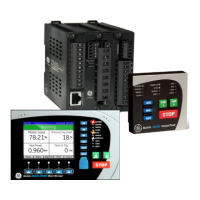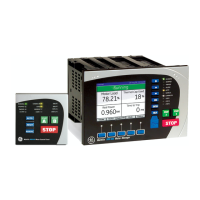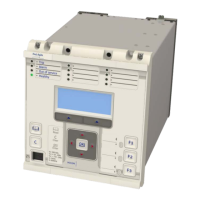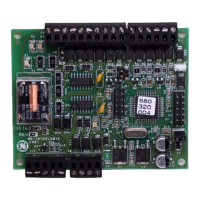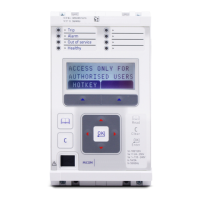3 VOLTAGE TRANSFORMER SUPERVISION
The Voltage Transformer Supervision (VTS) function is used to detect failure of the AC voltage inputs to the
protection. This may be caused by voltage transformer faults, overloading, or faults on the wiring, which usually
results in one or more of the voltage transformer fuses blowing.
If there is a failure of the AC voltage input, the IED could misinterpret this as a failure of the actual phase voltages
on the power system, which could result in unnecessary tripping of a circuit breaker.
The VTS logic is designed to prevent such a situation by detecting voltage input failures, which are NOT caused by
power system phase voltage failure, and automatically blocking associated voltage dependent protection
elements. A time-delayed alarm output is available to warn of a VTS condition.
The following scenarios are possible with respect to the failure of the VT inputs.
● Loss of one or two-phase voltages
● Loss of all three-phase voltages under load conditions
● Absence of three-phase voltages upon line energisation
3.1
LOSS OF ONE OR TWO PHASE VOLTAGES
If the power system voltages are healthy, no Negative Phase Sequence (NPS) current will be present. If however,
one or two of the AC voltage inputs are missing, there will be Negative Phase Sequence voltage present, even if the
actual power system phase voltages are healthy. VTS works by detecting Negative Phase Sequence (NPS) voltage
without the presence of Negative Phase Sequence current. So if there is NPS voltage present, but no NPS current,
it is certain that there is a problem with the voltage transformers and a VTS block should be applied to voltage
dependent protection functions to prevent maloperation. The use of negative sequence quantities ensures correct
operation even where three-limb or V-connected VTs are used.
The Negative Sequence VTS Element is blocked by the Any Pole Dead DDB signal during SP AR Dead Time. The
resetting of the blocking signal is delayed by 240 ms after an Any Pole Dead condition disappears.
3.2
LOSS OF ALL THREE PHASE VOLTAGES
If all three voltage inputs are lost, there will be no Negative Phase Sequence quantities present, but the device will
see that there is no voltage input. If this is caused by a power system failure, there will be a step change in the
phase currents. However, if this is not caused by a power system failure, there will be no change in any of the
phase currents. So if there is no measured voltage on any of the three phases and there is no change in any of the
phase currents, this indicates that there is a problem with the voltage transformers and a VTS block should be
applied to voltage dependent protection functions to prevent maloperation.
To avoid blocking VTS due to changing load condition, the superimposed current signal can only prevent operation
of the VTS during the time window of 40 ms following the voltage collapse.
3.3
ABSENCE OF ALL THREE PHASE VOLTAGES ON LINE ENERGISATION
On line energisation there should be a change in the phase currents as a result of loading or line charging current.
Under this condition we need an alternative method of detecting three-phase VT failure.
If there is no measured voltage on all three phases during line energisation, two conditions might apply:
● A three-phase VT failure
● A close-up three-phase fault.
The first condition would require VTS to block the voltage-dependent functions.
In the second condition, voltage dependent functions should not be blocked, as tripping is required.
To differentiate between these two conditions an overcurrent level detector is used (VTS I> Inhibit). This prevents a
VTS block from being issued in case of a genuine fault. This overcurrent level detector is only enabled for 240 ms
Chapter 18 - Supervision P543i/P545i
470 P54x1i-TM-EN-1
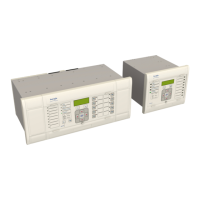
